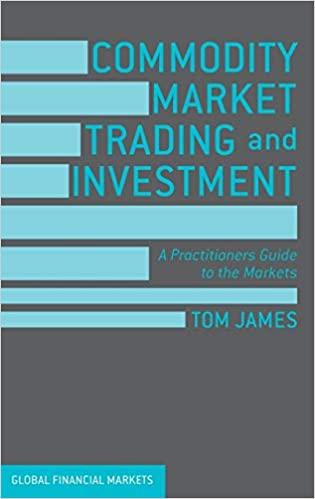Question
You may want to take a look at my mini course on EVA in doc share EVA Forecasting Mini Course before you give this a
You may want to take a look at my mini course on EVA in doc share "EVA Forecasting Mini Course" before you give this a whirl.Project-A Our earned value analysis of Project -A shows us it's a little out of tolerance however given the nature of the project we knew that was likely and within our project contingency reserves. We don't see that situation changing as we complete the effort. While senior management agrees with that assessment they, of course, still want to know what our Estimate at Completion (EAC). Project-B In a similar vein, our earned value analysis of Project -B shows that this project is out of whack as well. The CPI and SPI numbers have been consistently predictive of the effort, but due to a number of circumstances we have not been able to improve them. In addition, this effort has a drop dead date that simply cannot be moved! If we have to do we can move on the budget but the date is set!
EAC
=
AC + Bottom up estimate to completion
Well.. In truth we never really estimated the detailed costs in the first place I reminded the
group. We mostly took the total from the original build multiplied it by an inflation factor and
ALLOCATED the cost downward...
I figured we would get here sooner or later
the boss opined.
What we are saying with THIS
approach is we need to stop and re-estimate all the REMAINING detail tasks, then sum them
up to get a new estimate of future costs and then ADD them to what we have spent so far to
get a brand new EAC.
Probably NOT my best move here. Reminding people
the emperor has no clothes
does NOT make you a popular
guy so I moved rapidly on...
In any case, if this is our best assessment of the facts on the ground
at this point, then Henry needs to get with his people and re-estimate, then get back to us
with his new EAC.
Wait..
Says Henry looking a bit pale.
Didnt you say there was one more approach we
should consider?
Right you are Henry
, the boss and I say simultaneously
(which got a chuckle
from the group which was badly needed about then)
DP George
Page
7
Earned Value
Forecasting
The last one goes like this
(I tell the group)
If we think both the schedule performance and budget
performance are accurately telling us what is happening
, then re-estimation is just going to
confirm that fact and waste more time, money, and effort to add to the problem. If we cant
move the completion date (and we can all agree that is something we REALLY need to avoid)
then we can use what we know to be case (our current efficiencies) and project them through
until the end). If we do that then
our EAC is calculated as:
EAC
=
AC + {(BAC - EV)/(CPI x SPI)}
You left out the phases of the moon! Mike spat out from the back of the room. That looks like
alphabet soup! Look I manage a production operation Im not a statistician!
I knew Mike couldnt
stay quiet forever
, I told him ---
Wait Mike, let me explain this formula. You guys can follow this
stuff just fine! We just need to take it one step at a time.
First of all we have AC. T
hat
is just our actual costs to date in the project right? Right!
To that we add our budget adjusted for how much we have used up for the progress we have
made so far. That is just BAC EV as we have seen in earlier versions of EAC calculations.
Yes?!
But if we JUST did that we would NOT have adjusted from our original budget assumptions to
what we are finding on the ground in terms of budget expense and schedule progress. To do
THAT we need to adjust the (BAC EV) by how efficient we our with our budget AND our
schedule which is the product of CPI and SPI
Step by Step Solution
There are 3 Steps involved in it
Step: 1

Get Instant Access to Expert-Tailored Solutions
See step-by-step solutions with expert insights and AI powered tools for academic success
Step: 2

Step: 3

Ace Your Homework with AI
Get the answers you need in no time with our AI-driven, step-by-step assistance
Get Started


